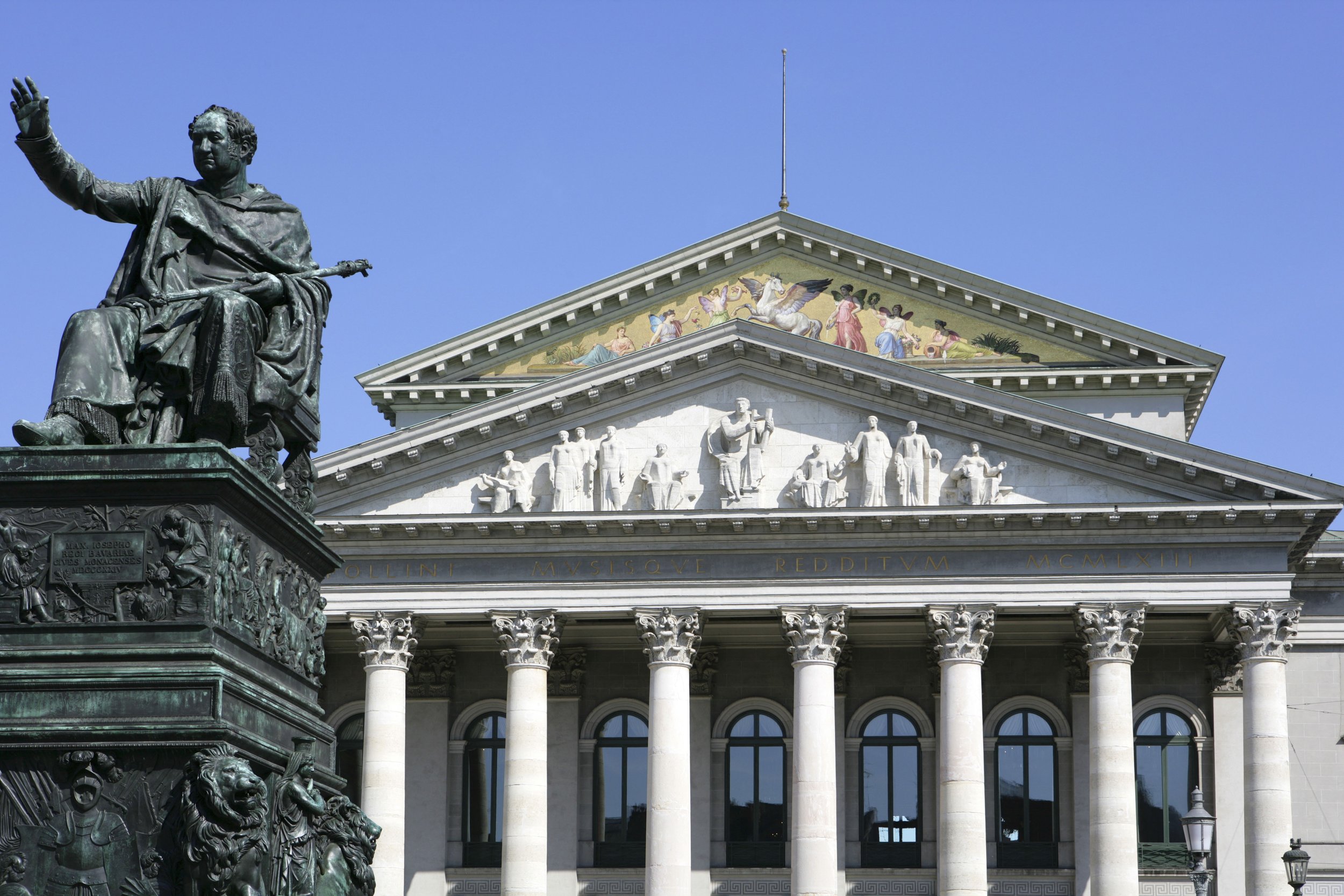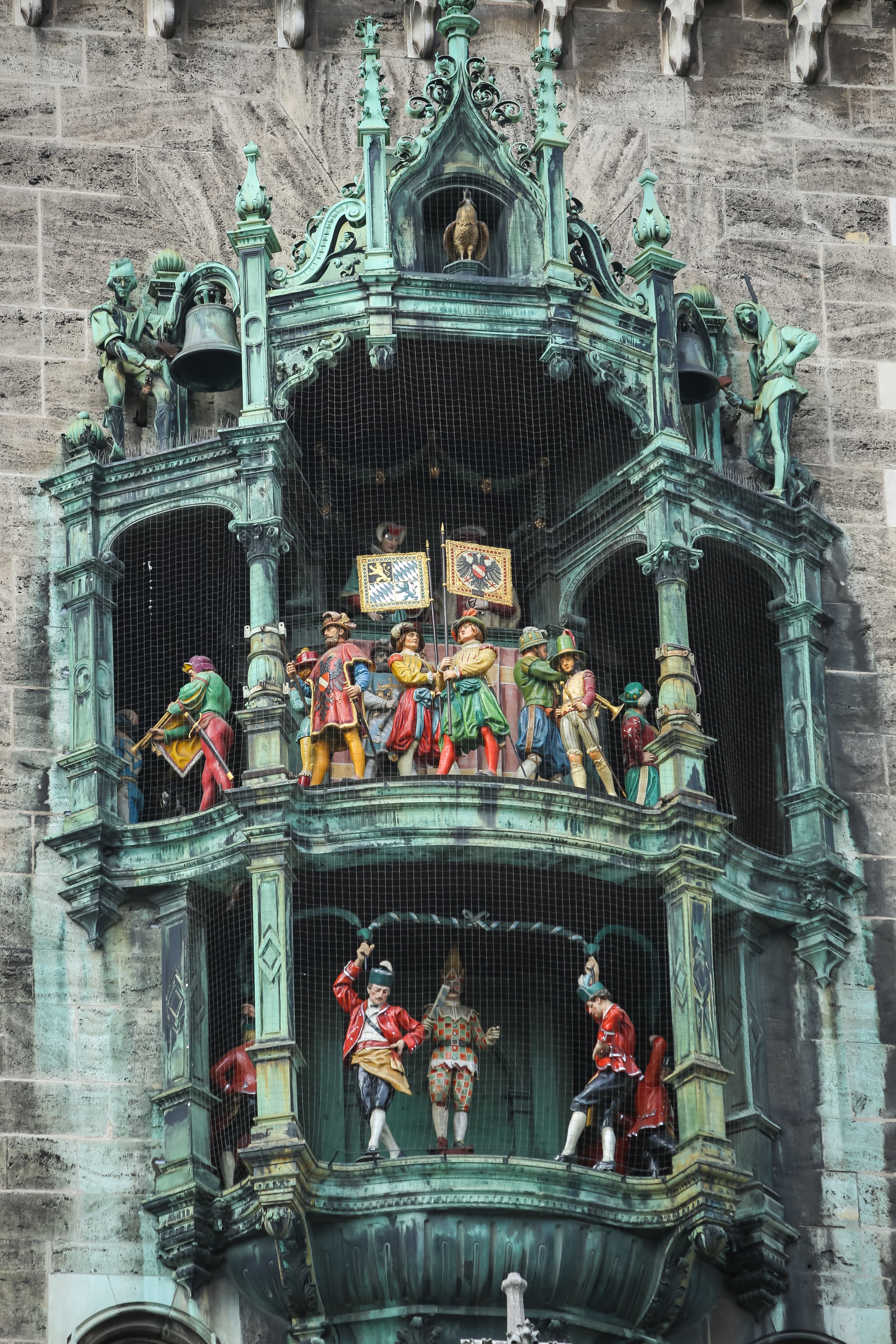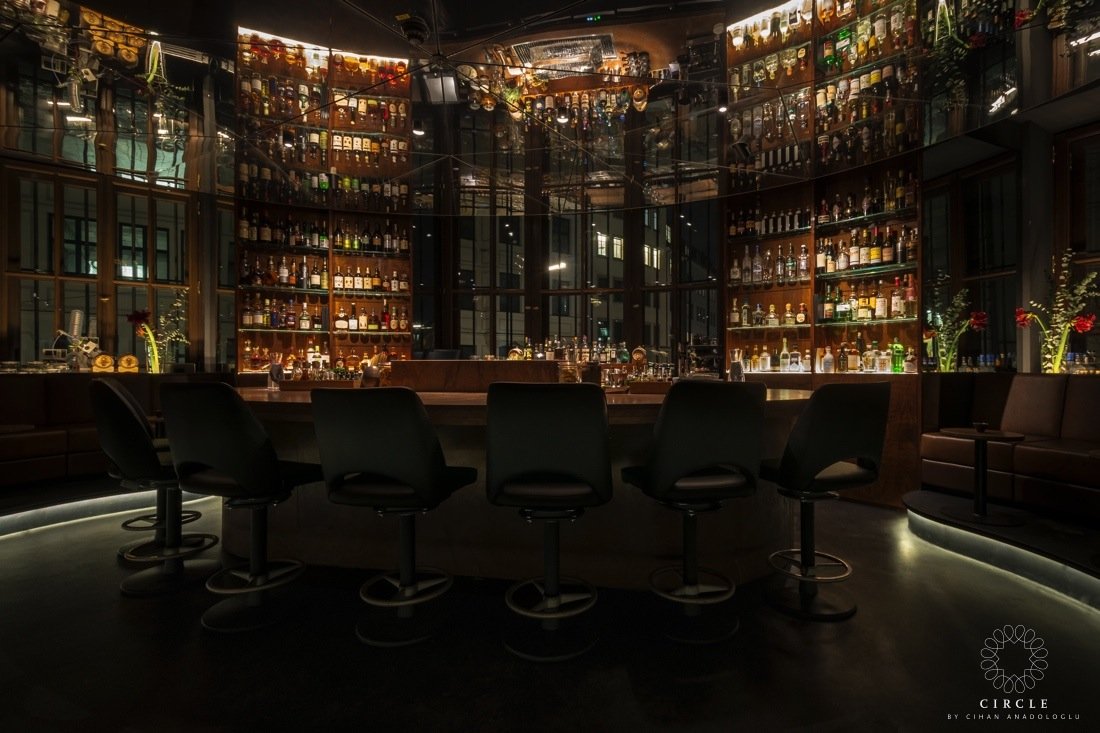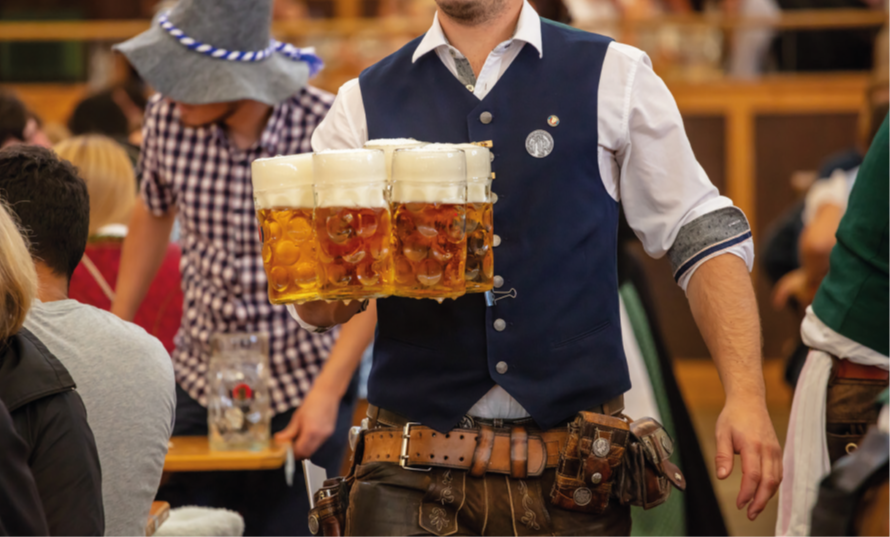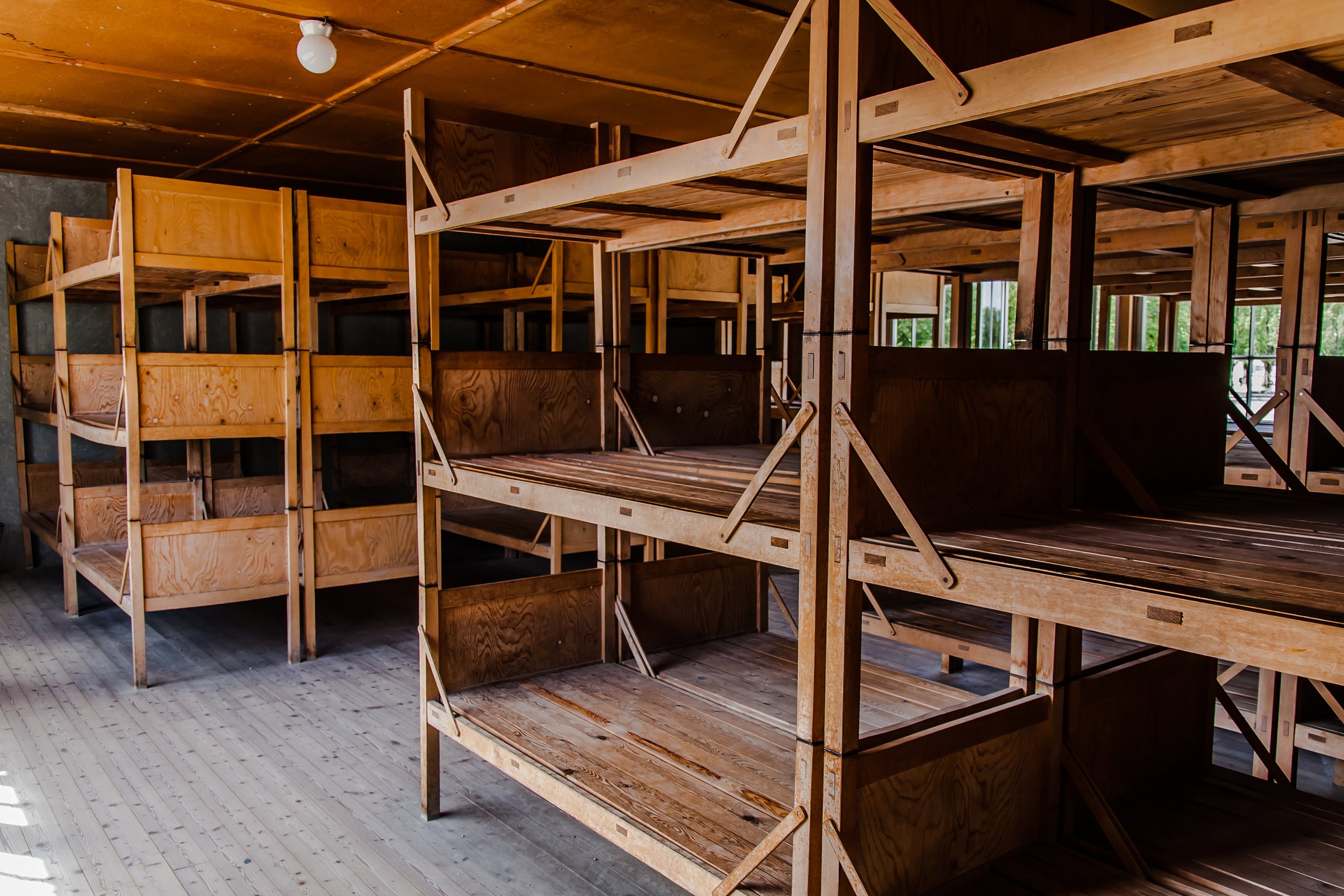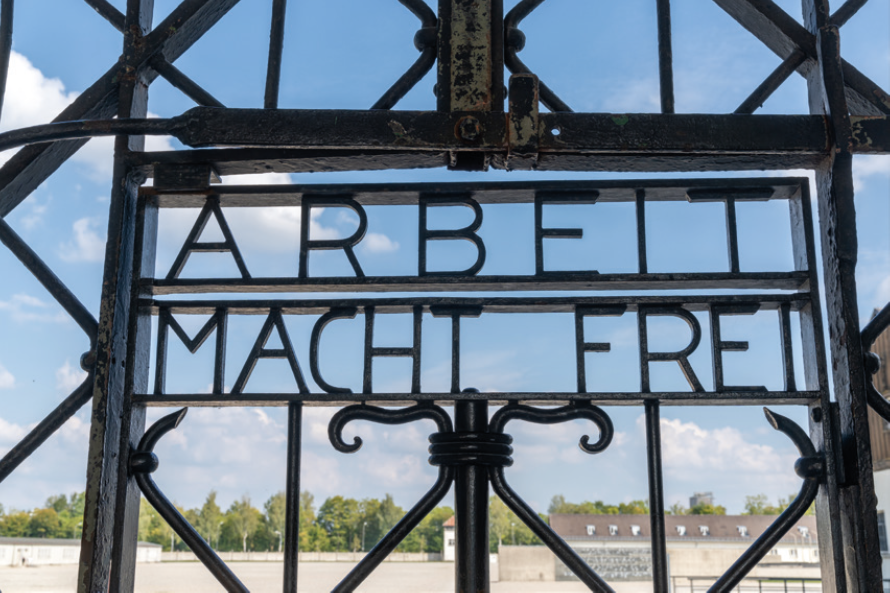48 Hours in Munich
They call it the city of laptops and lederhosen but as Norah Casey discovered Munich is home to beautiful architecture, river surfers, beautiful beer gardens and the elusive state of gemuetlichkeit.
Panoramic view of Munich city centre showing the City Hall and the Frauenkirche
I landed in Munich Sunday lunch time and by Monday night I had visited one of the world’s saddest places, honed business pitches with young global entrepreneurs, sampled the best of the city’s breweries, caught the daily Glockenspiel barrel dancers, lost an hour mesmerised by river surfers, visited the world’s biggest pub, stumbled upon sunbathing nudists and sipped champagne at the city's coolest private members club. It’s some city.
But I’ve left out the best bit, which I will share at the end.
I never expected to like Munich. If a city could be a person then to my mind Munich was an oversized beer swilling, car-loving man, decked out in lederhosen; strong on traditional values and a bit lacking in a sense of humour. But I couldn’t have been more wrong.
The city’s motto is ‘Munchen mag dich’, which means Munich loves you. In less than two days the feeling was mutual.
Mǖncheners use this Bavarian word ‘Gemuetlichkeit’. It roughly translates into a feeling of cosiness, cheer and good humour. It’s the state of bliss you feel on a warm sunny afternoon sipping beer in the beautiful gardens of Munich surrounded by happy smiling people sharing the same state of contentment. When it was explained to me I recognised that feeling. All too rare in our lives, but something special when it happens. I experienced gemuetlichkeit on a sunny Monday morning wandering aimlessly through the Altstadt (Old City). I found myself walking through a gothic gate, the remains of medieval fortifications dating back to 1301 which opens out to the large Karlsplatz square. Me along with a group of lunch time workers were sitting on rocks in a circle around the cooling fountain overlooked by the imposing baroque façade of the Palace of Justice. We were all sitting on our own little rock but sharing the same beautiful sunshine while the spray periodically fanned over our faces. A small group of older street performers were giving it all, an accordion player joined by a beautiful lady captivating us with her dancing. Children were dodging in and out of the spurts of water shrieking and laughing and I was eating the best buttered pretzel in the world. It was a little moment of magic. Gemuetlichkeit.
The home of Mozart, Wagner, Mahler and Strauss is a city of contrasts. The scars of history are evident in the new builds nestling close to the grandeur of the Baroque, Rococo and gothic facades in the old town. Despite heavy bombardment by Allied Forces during World War II, many historic buildings were spared and others rebuilt. So, today’s Munich is much like it was back in the 1800s including the famous Neues Rathaus, the city hall. Unlike other fast-moving cities, Munich is low rise. By law no building is permitted to rise higher than the 500-year-old Frauenkirche (Cathedral Church of Our Lady), which is the official landmark of the city.
The daily show
I just about made it to the Marienplatz (the town square) for the 12-midday daily jousting and dancing barrel makers performances at the Rathaus-Glockenspiel, Munich’s famous mechanical clock. The upper part of the Glockenspiel re-enacts the city’s most famous and lavish wedding of Bavarian Duke Wilhelm V in 1568 who was responsible for building the city’s first brewery. It’s a magical little performance of 32 life-sized figures jousting and bowing high up on the 260-foot tower with some 43 bells. The lower part features the famous Schäfflerstanz, the barrel maker’s dance. A small golden bird chirps from the top of the glockenspiel to signal the end of the 15-minute show which starts daily at 11am with extra summertime shows at 12md and 5pm.
The English Garden
Weird and wonderful, the Englischer Garten is one of the largest city parks in the world, and a must do even if you are only in the city for a short visit. Despite being miles from the ocean this enormous park is a surfing destination. At the southern end of the park the man-made river Eisbach has developed a surfer’s wave which attracts lots of locals on summer days. Not only is it a beautiful sprawling green space to relax and chill, it has creeks, lakes, several beer gardens, a Japanese teahouse and a colony of nudists.
The national pastime
You can’t visit Munich and not try the national drink. There are breweries, beer gardens and beer halls galore (even the Airport has its own brewery called Airbräu). There are, however, the ‘big six’, the oldest Munich breweries: Augustiner, Hacker-Pschorr, Hofbräu, Löwenbräu, Paulaner, Spaten-Franziskaner, there are lots of others.
I don’t drink beer but when in Munich and all that. Apart from anything else when we went to dinner at Augustiner Bräustuben (braeustuben.de), one of the oldest breweries in Munich, the waiter laughed heartily at my suggestion that I might try a gin and tonic. When he was finished wiping his eyes and letting the surrounding tables know what I had asked for (in German!) I pointed at one of the tall glasses of frothy golden beers at the next table. He nodded and said ‘Augustiner Edelstoff? Good choice’. And it was. Over 670 years ago the monks began brewing at the Augustinian monastery and it has survived many incarnations, and two world wars. Made strictly according to the 1516 Reinheitsgebot purity laws Bavarian beer must only be made from malted barley, hops and water (yeast has since been added) with no added chemicals or preservatives. Adhering to nature's core ingredients apparently significantly reduces the chance of a hangover. We clinked glasses and chorused “prost” on more than a few occasions believing in that promise! We dined on traditional Bavarian dishes, meatballs, schnitzel pork knuckle, bratwurst and boiled beef. The food was good. The hangover was epic. Don’t believe a word of it about the purity of the beer.
The world’s biggest pub
There are many reasons to visit Hofbroihaus. The buzzy, boisterous 5000 capacity beerhaus near Marienplatz was frequented by Lenin, Mozart and Hitler back in the day. Locals keep their personal beer glasses in special chambers in a safe here passed down through the generations. It was opened in 1589 by the Duke of Bavaria, Whilelm the 5th, as the official Royal Brewer, although it is hard to get a sense of the historical significance of this behemoth of a pub. The three-story hall was packed the Sunday we were there with a jovial crowd swinging and swilling from steins of frothy beer to the cheery oompah Bavarian band. There are 24 other Hofbräuhaus franchises in the world, including Bangkok, Dubai, Stockholm and a full-scale replica in Las Vegas.
Coolest club in town
From the old to the new. My final night in Munich was a speaking engagement at the city’s first and coolest private members club which opened last year. The HEARTHOUSE (thehearthouse.me) is an extraordinary mix of avant garde, techno wizardry with beautiful light filled rooms, home to two restaurants, two bars, a night club and a variety of meeting spaces. I did the grand tour on arrival before the speech and one room outdid the other. It’s pretty special. The award winning interior features coloured stone bars, mirrored surfaces, screenarounds (featuring a live feed from Cannes the night I visited). The Japanese-inspired bar ‘Circle by Cihan Anadologlu’, is listed as one of the world’s top 100 cocktail bars, has deservedly won many accolades including Best European and Most Innovative Bar. The heart of HEARTHOUSE is the Kitchen where chef Florian Gürster, of Hakkasan and Nobu fame, serves up eastern inspired delights. The food is great, the cocktails are amazing and the service is impeccable. This is an arty, classy place to meet, eat and do business in Munich and if you visit the city do everything you can to visit. It’s breathtaking.
Oktoberfest
Think Munich, Think Oktoberfest, but the city has so much more to offer. Imagine you only visited Dublin on St Patrick’s Day and thereafter that was your impression of the city. Visiting Munich during the most overcrowded, overpriced, beer binge fest might be fun but it’s not just what Munich is about. But for those of you who are still keen to go then you can join over seven million tourists who flock to Munich between September 16 and October 3 consuming their collective body weight in beer. Prices skyrocket during Oktoberfest but it doesn’t deter the revellers who arrive from early morning to get a seat in one of the coveted 34 brewery tents. Even going to the toilet (over a thousand extra are erected for the event) risks losing that seat so it takes some stamina and bodily discomfort to get through the all-day beer drinking.
Christmas Markets
Munich has many Christkindl Märkte and a special Christmas tram, Christkindltram, that runs through the city centre during advent. The biggest and best known is Tollwood, but the whole city has a Christmassy feel with lots of places selling Christmas biscuits (Lebkuchen) and the traditional spicy red Glühwein. Marienplatz, the main town square, is the place to go if you want to do some Christmas shopping along with a Christmas market. Woodcarvers stands are a short walk away at Sendlinger, while the artisan market at Schwabing, Münchner Freiheit, is worth a detour. There is nothing more magical that Englischer Garten in the snow and the pretty Christmas market, Chinesischer Turm
And the rest
My packed two days didn’t allow for all that Munich has to offer so I asked my new found Mǖnchener friends what they would recommend. It holds no attraction for me but football fans head to the home of Germany's most successful and most famous football club FC Bayern München at the Allianz Arena. Also on the tourist list is the Olympiapark which was the site of the 1972 Olympic Games and serves now as a venue for rock concerts, festivals and cultural events. It was formerly the home stadium of the FC Bayern München prior to the Allianz Arena being completed in 2005.
Munich has over 45 museums but top of the list is the Deutsche Museum, a great interactive science museum that attracts a million visitors annually. Other worthy stops include the Nationaltheater, home to the acclaimed Bavarian State Opera and where several of Richard Wagner's operas were premiered; next door to it the contemporary Munich Residenz, particularly the Hercules Hall which is home to the Bavarian Radio Symphony orchestra. A visit to the Odeonsplatz is also worthwhile especially if you can catch one of the summer open-air orchestral concerts. If you love cars then Munich is the place to be as it is home to one of the world’s most iconic brands, BMW, which even has its own dedicated museum (close to the Olympic Park)
Dachau
Dachau Concentration Camp Memorial Site.
Dachau had a profound effect on me. We went on our own later in the afternoon when the tours and crowds had abated and stayed far longer than we expected. The rain and wind lashed down on us as we walked through the gates emblazoned with the words Arbeit Macht Frei which translates as "work sets you free". The phrase was also posted at the entrance of Auschwitz. Tens of thousands or people died at Dachau, the first Nazi concentration camp which opened in 1933 at a former guns and munitions factory. It’s about16 kilometres north west of Munich.
The grey clouds settled low above us as we walked along the barbed wire fence and crossed the roll call ground where prisoners were forced to stand motionless for an hour morning and evening. So many sick and exhausted prisoners lost their lives on that ground. Their fellow prisoners were not allowed to help them or even acknowledge their deaths.
The Bunker Camp Prison was the centre of terror where prisoners were imprisoned alone in the dark for weeks only being fed every five days or so. They were tortured and beaten by the SS guards, subjected to ‘pole-hanging’ in the courtyard and unknown numbers were murdered or took their own lives. The Gestapo isolated political prisoners for months and even years.
We got lost in the gloomy corridor of cells, peering through the peepholes at the tiny cramped spaces where the ‘special prisoners’ were kept. I could see marks etched on the walls in the dimly lit spaces and imagined the human suffering that this place has witnessed. I found myself touching the bars on the windows, the old light switches, the deep doorway of the interrogation room designed to mute the sounds of the screams. The ghosts lingered in that place, pure evil mixed with unimaginable human suffering. I shed tears on and off throughout the afternoon but by the end tears seemed such an empty response to the scale of depravity and suffering that took place at Dachau.
We went to the cramped Barrack room where prisoners slept top to toe, there was barely room to move in the bunks. As you walk the now empty rooms a glance at the pictures on the walls transport you back to what these walls have witnessed. The humiliation and abuse suffered by the inmates.
We went to the Crematorium and the Gas Chamber last. Nothing beforehand can prepare you for standing in a room where so many people lost their lives. The sign on the wall tells me that the four furnaces could cremate two to three corpses at a time. Right in front of the burning ovens was the execution site where most hangings were carried out so the bodies could be directly transferred to the incinerator. The ovens, preserved in the incinerator where the bodies were burned, need no embellishment. They stand stark and solid in the silence, aged with use. The work they have seen doesn’t bear thinking about.
The Gas Chamber is home to mass murder where up to 150 people at a time were duped into believing they were entering a shower room. Less than 20 minutes later they were suffocated to death through prussic acid poison gas (Kyklan B). A photograph shows bodies piled high in the very place I now stood alone with the incessant rain battering the roof. I was transfixed at the spot where the gas was pumped into the spartan concrete room. The fake shower spouts clearly visible while the lethal gas holes are less so. The solitude of the late afternoon allowed far too vivid a picture of the terror of those people crowded together. The realisation of their impending death as the doors were bolted shut and the gas released. I took photographs, because that is what travel writers do, but almost felt I had sullied the memory of those souls by doing so.
In the summer of 1940 the crematorium was built to cater for the influx of new prisoners. Some 11,000 people were cremated between then and April 1943.
We returned to Munich by bus, train and tram. Silent and reflective. It was a powerful and emotionally draining afternoon. It was one of the most important experiences of my life and we debated on into the night the capacity for evil that inflicted such horrors on fellow humans. I don’t think I need to visit another concentration camp. Once is enough.




